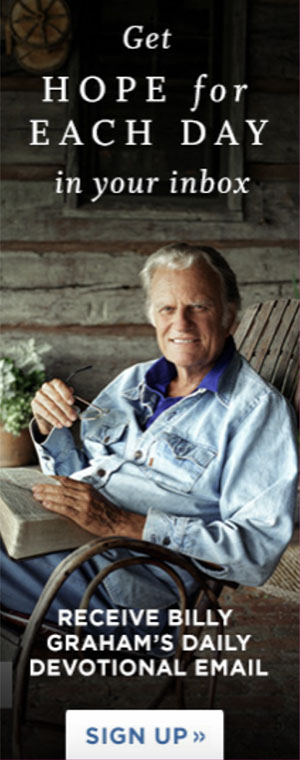His pioneering role in overcoming racial barriers is chronicled in his autobiography, “Gospel Trailblazer,” from which this article is taken.
I was sitting on the [Crusade] platform at Madison Square Garden before 18,000 New Yorkers who had come to hear Billy Graham preach. Seated with me on the stage were a dozen other pastors and civic leaders. We were all people of faith–Christians who loved the Lord. However, one thing set me apart from the other men on the platform: I am black.
There’s a mixed blessing to being the first African-American to realize some key achievement in the United States. It is an honor to overcome a barrier that has long kept blacks on an unequal footing with whites. But, along with the outer triumph, there is an inner ache–an angst–of having to live with the often unfriendly fallout of going where no black man has ever gone before. It’s feeling that you’re a living experiment, a human lab test. It’s the pressure of knowing your every word and action has the potential to make or break the hopes of millions of others who will come after you.
I was acutely aware of this pressure on that summer day in 1957. I had agreed to become the first African-American associate on Billy Graham’s team of evangelists, but I had not taken a hard look at the racial ramifications of my decision. I had a call from God to preach the Gospel of Jesus Christ. That was my priority. Soon, though, I was forced to look at the matter through the American social prism of black and white.
Back in 1957 we were just three years removed from the landmark Brown v. Board of Education case that opened the doors for racial integration in the United States, and we were still a few years away from Martin Luther King’s rise to national prominence. It was a different world.
Back then, when a figure such as Jackie Robinson broke the race barrier in Major League Baseball, he received death threats from fans and dirty looks from members of his own team.
I didn’t receive death threats, but I was the recipient of plenty of dirty looks. And when news hit the street that Billy was thinking of bringing me on board, he received an alarming number of disparaging letters: “You should not have a Negro on your team,” came the warnings. “You’re going to ruin your ministry by adding minorities. We may have no choice but to end our support.”
For better or worse, the church has typically followed the lead of secular society when it comes to our attitudes about race. Today racial reconciliation has become an evangelical buzzword. When Billy approached me to join him in New York, it was more or less understood that white Christians worshiped with white Christians and black Christians worshiped with black Christians.
Talk about being countercultural; what Billy did was radical. There’s no getting around it. He weathered the barrage of angry letters and criticisms. He resisted the idea of pulling the plug on the whole thing and playing it safe. There was never any hesitation on Billy’s part. He remained faithful to his convictions. He had dug the trench, you might say, and he was going to go through. He knew it was what God was calling him to do.
In New York, Billy once and for all made it clear that his ministry would not be a slave to the culture’s segregationist ways. He was serious about integrating the crowds at his Madison Square Garden Crusade, which had registered a disappointing number of blacks during its first several meetings. Soon after my arrival in New York, he looked to me for counsel on boosting minority turnout. “Howard, what can we do to get more blacks to the meetings?” he asked.
“If they’re not coming to you, you have to go to where they are,” I said. “Billy, you need to go to Harlem.”
This is a cardinal rule of evangelism and missions: You have to go where the people are. Jesus knew this well. While journeying to Galilee He expressed an urgent need to travel through Samaria (John 4:4-43). It wasn’t the most politically correct route for a Jew to take in those days, but He made it a point to put Himself where the needs were–where the people were. He was incarnational in every aspect of the term. We can only strengthen our evangelistic efforts by following His example. And Billy did.
After 68 days, the Crusade came to a close. It would go down as the longest Crusade in Mr. Graham’s ministry. When all was said and done, some two million New Yorkers had attended the event, and tens of thousands had made commitments to Jesus Christ.
A month later, I received another call from Billy. This time he wanted me to join his staff full time. I was thrilled and honored at the request. But I was torn: I loved being a pastor of a local church, but I knew God had given me a passion for evangelism.
I told Billy that I couldn’t give him an immediate decision. He told me to take my time, that the invitation was open.
I was never the kind of preacher who went out looking for a new gig. But God consistently had something lined up. All I knew was that I was called to preach the Gospel. I never could have predicted how far and wide that simple call would take me.
Frankly, neither my wife, Wanda, nor I were prepared for what God had in store for us next.
Excerpt from “Gospel Trailblazer: An African-American Preacher’s Historic Journey Across Racial Lines” by Howard O. Jones, with Edward Gilbreath. ©2003 Howard O. Jones. Published by Moody Publishers, Chicago.
Photos/Illustrations: Photo used by permission of Moody Publishing; BGEA Associate Evangelist Howard Jones at the Billy Graham 1957 New York Crusade: ©BGEA.

